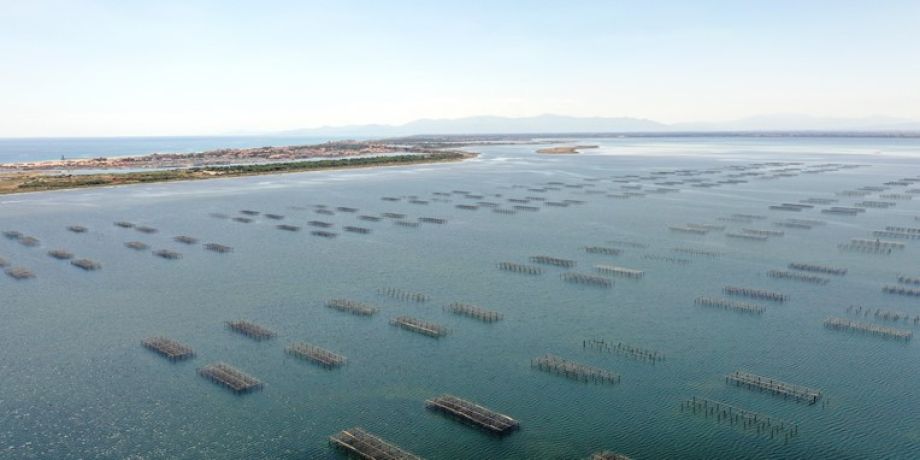
PORT INDUSTRY AND OYSTER FARMING, AN UNEXPECTED DUO IN CAMARGUE
The Camargue, a french region with an exceptional natural heritage, is also renowned for its oyster production. At Port-Saint-Louis-du-Rhône, in the Carteau sea cove, high-quality oysters thrive under the watchful eye of oyster farmers. However, these production parks coexist with a surprising environment, marked by the incessant passage of container ships and the presence of petrochemical plants and infrastructures in Fos-sur-Mer. How is this coexistence possible?
NATURALLY PRESERVED WATERS
Despite its proximity to industrial facilities, the waters of the Carteau bay remain surprisingly pure. The mistral wind, sea currents and the constant inflow of fresh water from the Rhône all contribute to renewal and oxygenation, limiting the risk of stagnation and pollution.
In addition, like the Coopaport aquaculture cooperative, oyster farmers rigorously ensure the quality of their oysters, thanks to regular health checks and sustainable practices that preserve this balance. The shellfish farmers also fight every day against the bad image associated with the area. And their hard work is paying off: their oysters have found their fans, particularly in restaurants and specialist stores, who are delighted with their quality.
A BOOMING MARKET
Since the arrival of oysters in the Camargue in 2016, production has continued to grow. The aim is to market 1,500 tonnes a year, and although quantities remain lower than in other oyster-growing regions, shellfish farmers are betting on quality rather than quantity.
The Camargue oyster is distinguished by its roundness, abundant flesh and unique flavor, due to its geographical environment. The mouth of the Rhône plays a key role in the richness of these waters, providing both sediment and micro-organisms that nourish the shellfish. This river influence creates water that is particularly conducive to the production of oysters with a delicate taste, less iodized than its competitors.
And 2023 saw a landmark event: the discovery of the world’s largest oyster. With a record weight of 2.36 kg, this wild oyster made headlines, proving that the Camargue is also an oyster-farming region not to be missed. This giant oyster, soon to be listed in the Guinness Book of Records, is a perfect illustration of the quality and richness of Camargue waters.
Have you ever tasted a Camargue oyster?









